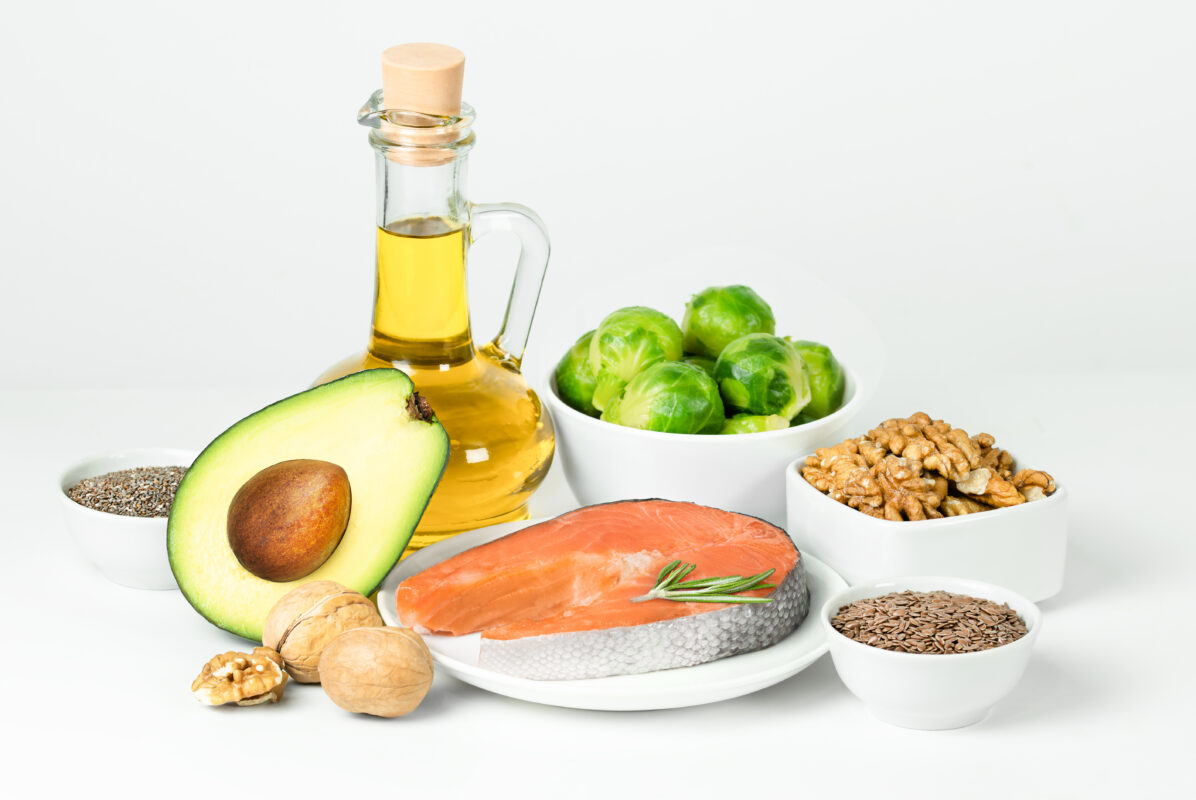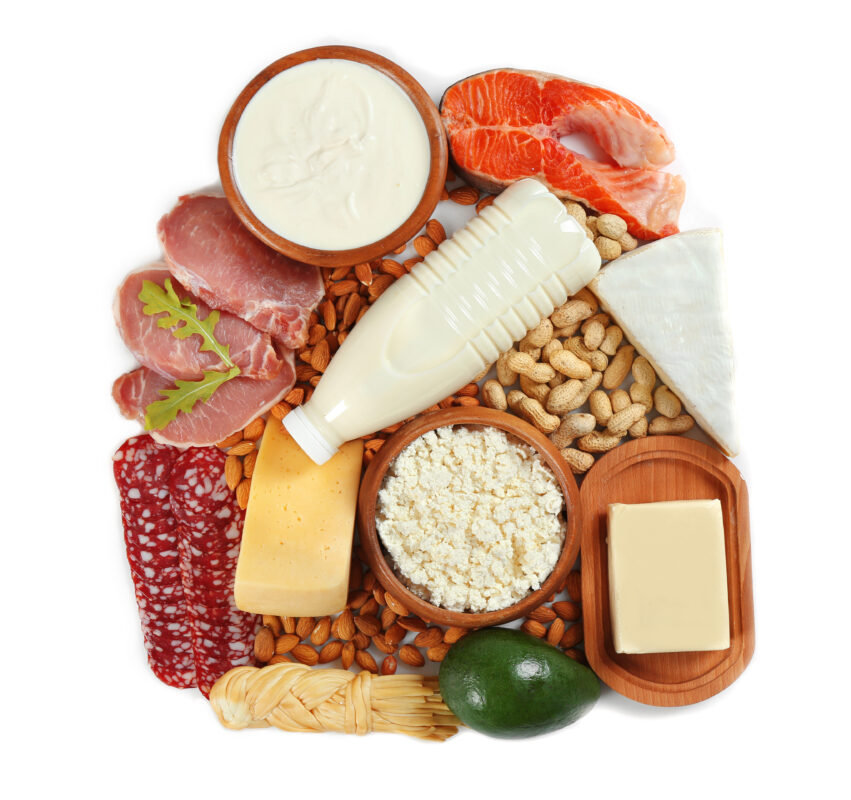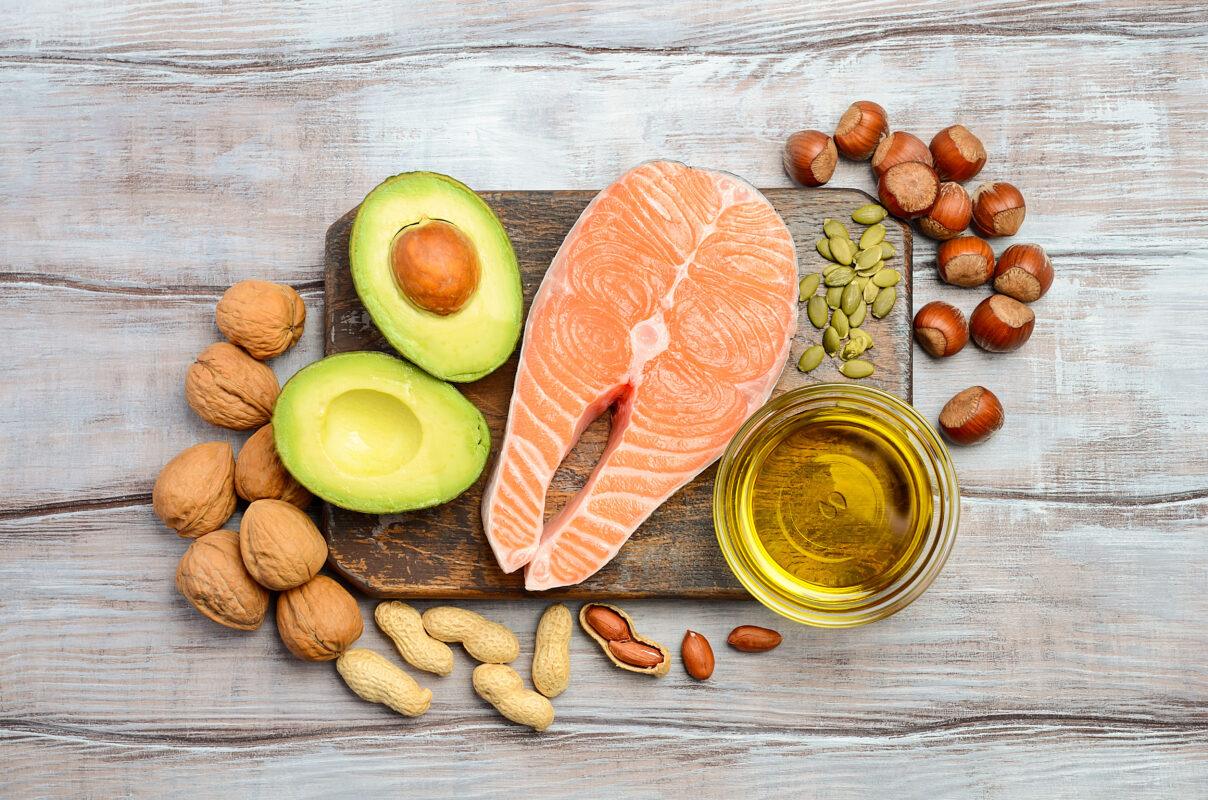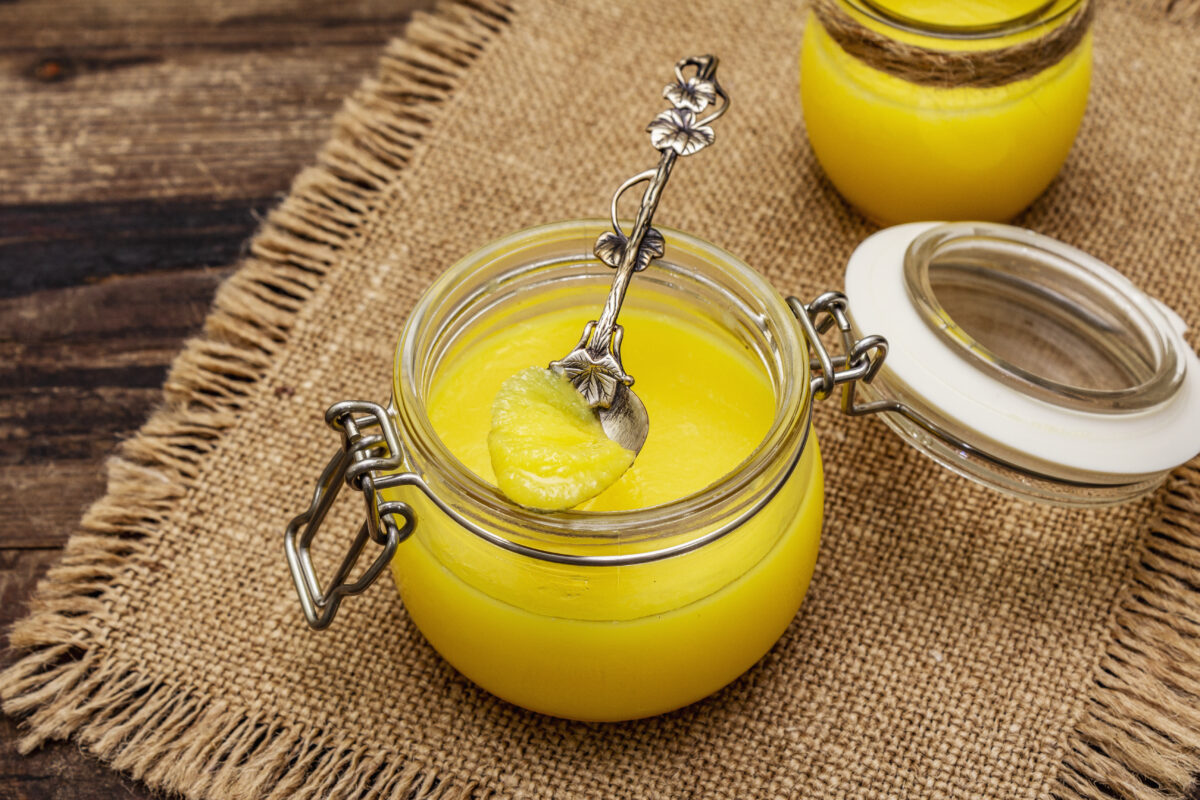Table of Contents
Introduction
Walk into a typical Indian kitchen and ask about ghee or any cooking oil, and you’ll likely be met with frowns and warnings. When, during childhood, we were fed with ghee-laced parathas, and dal that was laden with extra ghee over it, now all these are feared upon.
Whether it’s the ghee-laced parathas from your childhood or your grandmother’s advice to “avoid oily food,” the fear of fat runs deep in Indian households.
But here’s the twist, science no longer demonises this macro the way it once did. In fact, healthy fatty acids are essential for our bodies. The fear surrounding them isn’t just outdated; it could be harming our health.
This blog dives deep into the origins of India’s fat phobia, explains the role of its different types, busts long-standing myths, and shows how to include good fatty acids in your everyday meals, guilt-free.
How the Western Narrative Influenced Indian Health Beliefs?

The global fear for this macro began in the 1960s and 70s, when saturated fatty acids were blamed for the rise in heart disease in the West. The “low-fat” movement grew stronger in the 1980s, particularly in the United States, which began advising people to drastically reduce their fat intake.
As India’s economy opened up in the 1990s, these ideas trickled into our urban homes through:
- Western dietary guidelines
- American cereal brands promoting “low-calories” eating
- Doctors mimicking foreign research without Indian data
Suddenly, our home-cooked ghee-laden dal and mustard oil tadka became villains, while breakfast cereals and skimmed milk were labelled “modern and healthy.” This shift created a cultural conflict between traditional Indian wisdom and modern misinformation.
Why Fat Is Essential?

Before we talk about the types, the more important thing to understand is why your body needs this particular macro in the first place.
What it Does in the Body:
- Act as an Energy Source: It provides 9 kcal per gram, which makes it a powerful and sustained energy source.
- Cell Functioning: Every cell in your body has a lipid based membrane.
- Brain Health: Nearly 60% of your brain is made up of lipids.
- Vitamin Transport: It helps absorb Vitamins A, D, E, and K, essential for immunity, bone health, and vision.
- Hormone Production: From estrogen to testosterone, it plays a role in regulating your hormonal system.
- Satiety & Blood Sugar: It slows down digestion and keeps you fuller for longer, thus preventing sugar spikes.
Types of Fats

Understanding this factor is the key to fixing how we eat, without unnecessary guilt.
| Types | Common Indian Sources | Health Impact |
| Saturated | Ghee, coconut oil, butter, full cream milk | Stable at high heat. Safe when consumed in moderation. |
| Monounsaturated | Mustard oil, groundnut oil, sesame oil, avocados | Improves heart health, helps reduce bad cholesterol. |
| Polyunsaturated | Flaxseed, chia seeds, sunflower oil | Source of omega-3 & 6, balancing ratio is key. |
| Trans | Vanaspati, margarine, deep-fried snacks | This increases inflammation in the body & poses heart risk. |
| Omega-3s | Fish, flaxseed, walnuts, hemp seeds | Anti-inflammatory, boosts brain & heart health. |
The Most Common Myths in Indian Households

Myth: Ghee causes cholesterol or increases cholesterol levels
Fact: Studies now show that moderate ghee intake (1-2 tsp/day) is not harmful and may actually raise HDL (good cholesterol). Ghee contains butyrate, which supports gut lining and reduces inflammation.
Myth: Cooking oil is harmful, so better to avoid it completely
Fact: Oils are essential for cooking and absorbing certain vitamins, what actually matters is which oil and how much you use. Switching between oils seasonally is an Indian tradition that is worth reviving.
Myth: Eating fat leads to weight gain
Fact: Overeating anything, whether carbs or even protein, can lead to weight gain. As this macro is more satiating, it actually helps you eat less in the long run.
Myth: Cholesterol from eggs, ghee, and meat is dangerous
Fact: Dietary cholesterol has minimal impact on blood cholesterol for most people. The real dangers? Trans fatty acids, sugar, and a sedentary lifestyle.
Story Time: A Family That Cut Out Ghee (Based on True Events)
Veena, a 58-year-old homemaker from Maharashtra, stopped using ghee in her family meals after her husband’s cholesterol reports came in high. She switched to using just a few drops of refined sunflower oil, and over a year, what she observed was more shocking:
- Her husband’s cholesterol levels remained high
- Her grandson developed dry skin issue and frequent colds, coughs episode
- Her daughter-in-law struggled with postpartum hairfall and fatigue
After consulting a certified nutritionist and after a lot of counselling, they reintroduced ghee (1 tsp/day) and started cooking food in mustard oil. Within months, they reported better digestion, improved energy, and no further cholesterol spikes.
With all these changes observed just by making small efforts in the diet, their myth about this macronutrient blurred out a little, though it took almost 4-5 consultations more to convince them that eating or including this macronutrient is actually good; we just need to make sure that we are adding the appropriate source in appropriate amounts.
Modern Diet Dangers: Are We Replacing It With Worse Options?
In the trend to eat low calorie foods, most of the Indian households often end up increasing the following unhealthy ingredients in their diet:
- Sugar in teas, snacks, packaged breakfast cereals
- Refined carbs like white bread, biscuits, maida-based foods
- Hidden trans fatty acids from processed snacks, that are often labeled “low calorie”
- Artificial sweeteners in low fat yogurts, juices and smoothies.
These swaps often lead to increased inflammation, insulin resistance, and cravings, leading to certain health issues that almost all of us try to avoid.
How to Make Healthy Swaps?

| Unhealthy Practice | Healthy Swap |
| Using vanaspati/dalda | Use cold-pressed mustard or sesame oil |
| Skipping ghee completely | Add 1 tsp ghee to dal, khichdi, or roti |
| Frying papad/snacks in reused oil | Air-fry or dry roast the same |
| Low-fat flavoured yogurt | Use full cream dahi with fruit or seeds |
| Buying low fat biscuits | Eat soaked nuts or some seeds instead |
Balanced Indian Diet Plan: What Should It Look Like?
A well-rounded Indian thali should include all three macros, that too, all in harmony and we should not focus on diet or low calorie foods that have been processed a lot.
What a Sample Healthy Indian Diet Plan Should Look Like:
- 2 phulkas with ghee
- Palak dal with ghee tadka
- Mix vegetable sabzi, cooked in mustard oil
- Cucumber carrot, onion salad with lemon
- Curd or buttermilk as a side
This plate is not just tasty but nutritionally balanced, with around 15g of healthy fats that fit right in the daily requirement range.
How Much Fat Should You Actually Eat?
This is a dilemma for most of us. We are often confused about how much of which nutrient we should eat. As this is the most feared and excluded macro, let’s just clear this doubt now.
So, according to ICMR-NIN (2020):
- Fats should make up to 20–30% of your total energy intake. For a person eating 2000 kcal/day, that’s about 45–65g per day.
- Saturated fatty acids: Should be less than 10% of total energy.
- Trans fatty acids: Should be <1% practically avoidable.
Rule of thumb: 3–5 tsp of visible fat (oil/ghee) daily per adult is acceptable; also include nuts, seeds, milk, or fish.
What are Good Fats in Indian Foods?
| Food | Types | Benefits |
| Desi Ghee | Saturated fatty acids + butyrate | Gut health, brain, skin |
| Coconut | MCTs, saturated fatty acids | Instant energy, metabolism boost |
| Mustard Oil | MUFAs, omega-3 | Heart-friendly, antibacterial |
| Groundnuts (peanuts) | Monounsaturated fatty acids | Protein and good fats combo |
| Almonds | Vitamin E | Skin, hair, anti-aging |
| Flaxseeds | Omega-3 ALA | Anti-inflammatory, hormonal health |
Conclusion
It’s time to correct decades of misinformation and fear-mongering that have been done around it. Fat is not something to be feared, especially in the context of Indian diets, where:
- It helps balance high-carb meals
- It adds flavour and satiety
- It help supports digestion, hormones, skin, and brain function
What we need is moderation, variety, and correct education, not just blind restriction.
So don’t go by what any influencer on your social media is saying; always verify whether that information is correct and is coming from a credible source or not. Do your research and then come to a conclusion.
If you want to learn more about macros and their benefits, go check out this blog.
Frequently Asked Questions (FAQs)
Is it okay to give ghee to kids daily?
Yes! Ghee helps with brain development, digestion, and immunity in growing children. 1–2 tsp daily is ideal.
Which oils are best for high-heat Indian cooking?
Mustard oil, groundnut oil and coconut oil are heat-stable and culturally suited for Indian food.
Are nuts and seeds good sources?
Absolutely. Almonds, walnuts, chia, and flaxseeds provide omega-3s, fiber, and essential nutrients.
Can people with heart disease eat ghee or coconut oil?
In small amounts, yes. Focus more on reducing trans fatty acids and sugar.
What are the side effects of a low fat diet?
These diets can cause vitamin deficiencies, hormonal issues, dry skin, poor brain function, and constant hunger.
Is fat bad for health?
Not at all, healthy fatty acids are essential for the body; only trans fatty acids and excess saturated fatty acids are harmful when consumed in large amounts.
What are the benefits of healthy fats?
They support brain function, balance hormones, reduce inflammation, improve skin, and help keep you full for longer.

